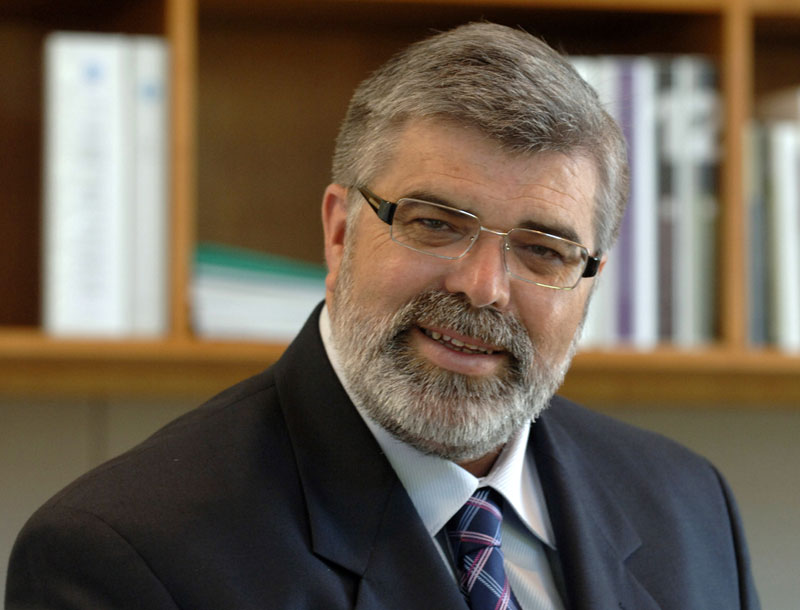The appointment of Senator Kim Carr to the Innovation, Industry, Science, Research and Higher Education portfolio sees a fourth minister in almost as many months.
Even in an acrimonious political climate, this is significant upheaval – especially so for the, at times, cloistered world of higher education.
Within a day of the return of Minister Carr to the portfolio, there is the possibility of a new deal - that universities may receive a stay of execution from the funding cuts announced in April in return for the government effectively ending their flagship policy on uncapped undergraduate places.
The new Minister indicated he was considering alternatives to the $3.8 billion funding cuts.
There is the possibility of a new deal - that universities may receive a stay of execution from .. funding cuts
Importantly, Senator Carr indicated that when the government re-examines the foreshadowed cuts, they could reconsider the system used to fund undergraduate students that is at present uncapped.
Once governments of both persuasions tightly controlled the number of undergraduate places they would provide.
But since the beginning of 2012 both major parties agreed to fund any qualified undergraduate student a university was willing to enrol.
Any change would be a major policy reorientation, affecting a cornerstone of the present system. (The uncapping of places was the biggest change since the late 1980s.)
This policy of uncapped places, known as the ‘demand driven’ system, has seen a likely unsustainable increase in Commonwealth supported undergraduate student places (CSPs).
Recent analysis shows CSPs will go from over 518,000 in 2011 to nearer 650,000 in the next few years.
This creates a large structural imposition on the federal budget if the policy is continued.
Whether the Minister is able to make his foreshadowed changes before the election, and what they will mean in practice, is another matter.
At the time of writing, university funding agreements with the government are yet to be signed and this may not happen until after the federal election.
The changes are possible under the current legislation: section 30-27 of the Higher Education Support Act 2003 allows the minister to set a maximum basic grant amount for universities and so could work as an effective capping mechanism, with a proviso that it cannot provide fewer places than the previous year.
Nevertheless, the promise of a reversal of the funding cuts or effective end to the flagship policy of demand-driven funding is far from certain, especially with the anticipated change of government.
The recent turnover in the portfolio also shows that a minister can make significant changes in a short time.
A little history: from 2010, Senator Chris Evans was the minister responsible for higher education and Senator Carr was then responsible for innovation and research (Senator Carr lost the portfolio following the failed attempt to remove Gillard from the prime ministership). Senator Evans continued the ALP’s strong support for the ‘equity agenda’ and the demand-driven system initiated under the previous education minister Julia Gillard.
Following Minister Evans, Chris Bowen took the reins although barely had time to settle in when he was replaced by Craig Emerson.
Dr Emerson promptly announced budget cuts to the sector and then a review of regulatory burden for universities. While a regulatory review does not sound like it is going to get many hearts racing, it was a well-received announcement and smart politics to appease a sector required to sacrifice funding to pay for the Gonski reforms.
University regulation and funding is a complex beast. With over 100 Commonwealth funding sources and numerous reporting requirements, few claim to fully understand how all the different elements interact.
Ministerial turnover can also be viewed against the thorny issue of whether public opinion around higher education affects the political weight it is given.
Public opinion surveys show strong support for universities in general and recent research by the sector-wide lobby group Universities Australia indicated that over 88% of Australians aspired for their children or young people they know to attend one.
But this has not traditionally translated into university funding and regulation being a potent election issue.
Senator Carr was reported this week as saying, “universities have been running a campaign and they have conveyed important messages to the government and I will be talking to them about the effects of those cuts.”
Whether the Minister would have made a similar statement if it were not in the lead-up to a very difficult election, we may never know.
The Coalition previously signalled that if elected they would generally seek stability for the sector, but not restore the ALPs higher education funding cuts (and may indeed cut more as part of a wider reduction in government spending).
The Coalition has repeatedly voiced concerns over the quality of higher education and whether graduates meet or exceed the skills and knowledge implied by their formal qualification.
If there is an effective end to uncapped undergraduate places and an implicit move towards addressing quality concerns, the differences between the major parties may in fact narrow in the lead-up to the election.
If the Coalition in government carries through with the ALP’s cuts foreshadowed in the Budget, they may put a future ALP opposition in a difficult position – forcing it to decide whether to vote against the policy change they proposed.





